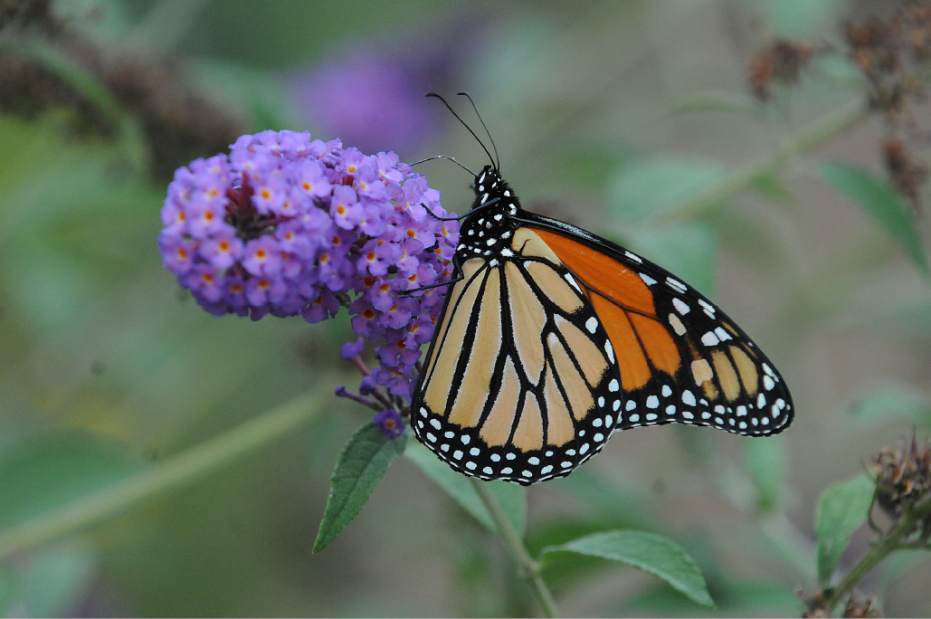https://archive.triblive.com/news/mccandless-garden-receives-certified-wildlife-habitat-designation/
McCandless garden receives 'certified wildlife habitat' designation

Louis Raggiunti | Trib Total Media
Delmont library officials recently received a grant to build a butterfly garden. They are seeking volunteers to help till and plant the garden later this month.
Kim Zachary planted a garden in her yard, and up sprouted a certified wildlife habitat.
The quarter-acre garden — which wraps around three sides of Zachary's Colonial-style home in McCandless and features a vegetable patch in the front yard, an herb garden in the side yard and a sprawling flower bed in the backyard — has attracted a variety of birds, butterflies and human admirers.
“Nothing — not ice cream, not coffee — calms me more than sitting on my deck and watching the drama in the garden,” said Zachary, 53, who works as a nurse anesthetist at Allegheny General Hospital on Pittsburgh's North Side.
“The finches and hummingbirds fly in and out, the sunflowers are blooming, and I saw my first monarch butterfly two days ago. They were checking out the milkweed, which is just about ready to bloom.”
Zachary's interest in gardening took seed when her eighth-grade science teacher demonstrated how a leaf, when dropped in a glass of water, could grow roots.
“I have no formal education or special training in gardening, just an interest in it. I've learned everything through killing things and reading books,” she said.
Zachary said she spends an “embarrassing amount of time” maintaining the garden, sometimes upwards of 12 hours per weekend, plus two hours each weekday.
While most wildlife, including red squirrels and rabbits, are welcome, deer are not.
“They chomp the sunflowers right off the stems,” she said.
She is trying to repel the deer with an unused bar of Irish Spring soap that she screwed onto a stake and inconspicuously posted in the garden.
“It's an experiment. Supposedly, the deer don't like the pungent smell,” she said.
Zachary's neighbor, Carmen Owens, 51, enjoys Zachary's garden from her own backyard deck.
“Kim's yard used to be all trees. When she moved in and put her hands in the dirt, it really changed. The garden is amazing,” she said.
Another neighbor, Larry Schweiger, also is impressed.
Schweiger, who had served as president of the National Wildlife Federation for 10 years before stepping down in 2014, encouraged Zachary to apply for the wildlife-habitat certification. The recognition is part of a National Wildlife Federation program that encourages homeowners to manage their gardens and yards in a manner that provides healthy, diverse animal habitats and ecosystems. The program began in 1973.
To earn certification, Zachary had to demonstrate that her garden offers food, water, shelter and a place for wildlife to raise its young. She also had to pledge that the garden is maintained in a way that protects the health of the soil, air, water and wildlife.
Zachary's inclusion of salvias, butterfly bushes and other plants attractive to pollinators, plus the addition of suet and nut feeders, supply ample food. A 250-pound tree trunk with a shallow bowl scooped out of it provides drinking water. A row of 15 low evergreens and patches of wispy vegetation bestow protective cover for the wildlife.
Zachary uses no chemicals in the garden, only compost, mulch and fresh manure she collects from a horse farm located down the road from her home.
By qualifying for the wildlife habitat certification, she automatically became a participant in the Million Pollinator Garden Challenge, as well, which is a national effort to encourage 1 million homeowners to plant flowers and vegetation that will help restore critical habitat for pollinators in peril, such as honeybees and monarch butterflies.
“Kim joins tens of thousands of people from across the country who have made a commitment to rededicate their yards back to nature,” said Schweiger, 65, whose own backyard garden and pond also serve as a certified wildlife habitat, as well, attracting blue herons, ruby-throated hummingbirds, honeybees, bullfrogs, turkeys, ducks and geese.
“Watching nature come back into your landscape is very rewarding,” he said.
Laurie Rees is a freelance writer.
Copyright ©2025— Trib Total Media, LLC (TribLIVE.com)
